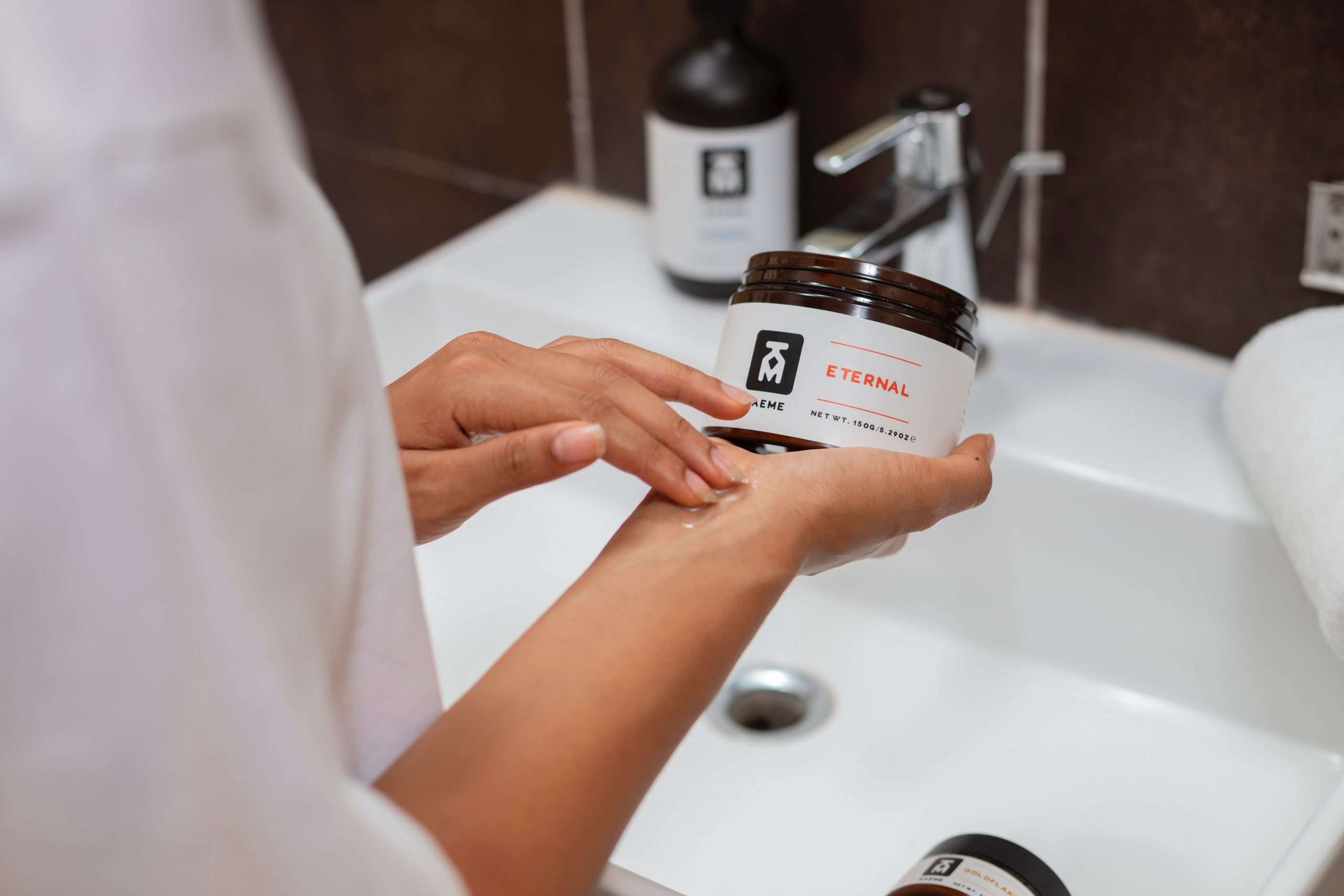In the case of keratosis pilaris, the name says it all: those affected suffer from small pimples and rough skin. The upper arms, thighs and less frequently the buttocks are most commonly affected. Keratosis pilaris is anything but rare: It is estimated that up to 50% of all people suffer from it — some more, some less.
With the right care and suitable medical agents, keratosis pilaris can be easily treated. Here you will find out everything you need to know!
Keratosis pilaris: What is it actually?
The keratosis pilaris is referred to in medical jargon as keratosis pilaris. It is a very common keratinization disorder of the skin. Keratosis Pilaris is neither contagious nor dangerous, but many sufferers find it visually disturbing. The skin change occurs at any age and in any gender, but especially during puberty. The course is very variable. Improvement in summer and deterioration in winter are quite typical. Sometimes keratosis pilaris is also associated with other skin diseases, such as neurodermatitis (atopic dermatitis).
How is keratosis pilaris formed?
Keratin keratosis develops when the body produces too much keratin. This is where the name Keratosis Pilaris comes from. Keratin is a protein that is found in everyone’s skin, but also in hair and nails. It provides stability and protection and therefore fulfills important functions for healthy skin. However, when there is too much keratin, it accumulates in hair follicles and pores. This is how the small pimples in keratosis pilaris develop. However, it is unclear why the excessive production of keratin occurs in the first place. Doctors suspect that genetic predisposition plays a role.
Additional knowledge for skin experts:
Even if pimples are always mentioned in connection with keratosis pilaris, they are actually not pimples at all. Pimples are inflammations of the hair follicles, mostly caused by bacteria. With nasty pus pimples — the ones that always appear in the middle of the face at the worst possible time — this is clearly visible. In the case of keratosis pilaris, on the other hand, the hair follicle is not inflamed but clogged with keratin. It is therefore called papules, small nodules on the skin.
Treatment: You can do this against keratosis pilaris
Hands off — No squeezing or scratching
We know it’s tempting. Nevertheless, you should definitely not press your skin. You irritate and injure your skin. In addition, there is a lot of dirt and bacteria on the fingers and under the fingernails that can get into the skin. This in turn can lead to inflammation. Signs of inflammation include pain and redness.
Care, care, care – keratosis pilaris love moisture
The keratosis pilaris do not know too much moisture. The right care products help to keep the skin supple and smooth. Due to the thickened horny layer, however, moisture cannot be absorbed as well. Therefore, keratosis pilaris requires intensive (more) care with moisturizing and moisturizing creams. It is also worth taking a look at the ingredients: Urea (urea), oils (e.g. almond oil), shea butter or hyaluronic acid provide moisture. Perfumes, fragrances and sulfates should be avoided because they dry out and irritate the skin. The same applies to skin cleansing: we recommend using soap-free shower products.
Tip: stay focused!
Keratosis pilaris does not disappear overnight. Regular and continuous care is the be-all and end-all.
Peels – Mechanical vs. Chemical
Exfoliation is used to gently remove dead skin cells. But peeling is not just peeling. There are mechanical and chemical peels. Mechanical peels contain e.g. small grains, pearls, salt or sugar that gently “scrub” the skin. Chemical peels, on the other hand, contain certain ingredients that “dissolve” the skin cells. The most common are body lotions with urea in various concentrations. Other ingredients in chemical peels are acids such as glycolic acid or salicylic acid. You can find both mechanical and chemical peelings over the counter in drugstores and pharmacies. There is no clear recommendation for the treatment of keratosis pilaris. Every skin responds differently to different products and ingredients. It is important that you do not overdo it and keep an eye on your skin. This way you can find out what is best for your skin.
Medicinal Treatment – Various active ingredients to choose from
With stubborn keratosis pilaris, daily skin care and regular peelings are not always enough. Then it makes sense to supplement medical treatment. The skin care should be continued in any case, it is always the basis. There are various active ingredients for medical treatment, such as retinoids or azelaic acid. These are available in creams and are simply applied to the affected areas of the skin. In the meantime, there are also laser treatments that can be carried out against keratosis pilaris.
Red Flags: when to worry?
All clear: There is actually no reason to worry, because in most cases keratosis pilaris do not require medical treatment. However, other skin diseases can also hide behind the actually harmless pimples. If the small pimples are filled with pus, for example, it can also be acne or an inflammation of the hair follicle (folliculitis). In the case of severely itchy pimples, an allergic skin reaction can also be the cause. If the pimples are distributed all over the body, contagious diseases such as chickenpox (varicella) must also be considered in children.
Are you unsure whether you suffer from keratosis pilaris? Our skin specialists at dermanostic will be happy to help you. Within 24 hours you will receive a diagnosis and therapy recommendation with a private prescription.
Download the dermanostic app now:


